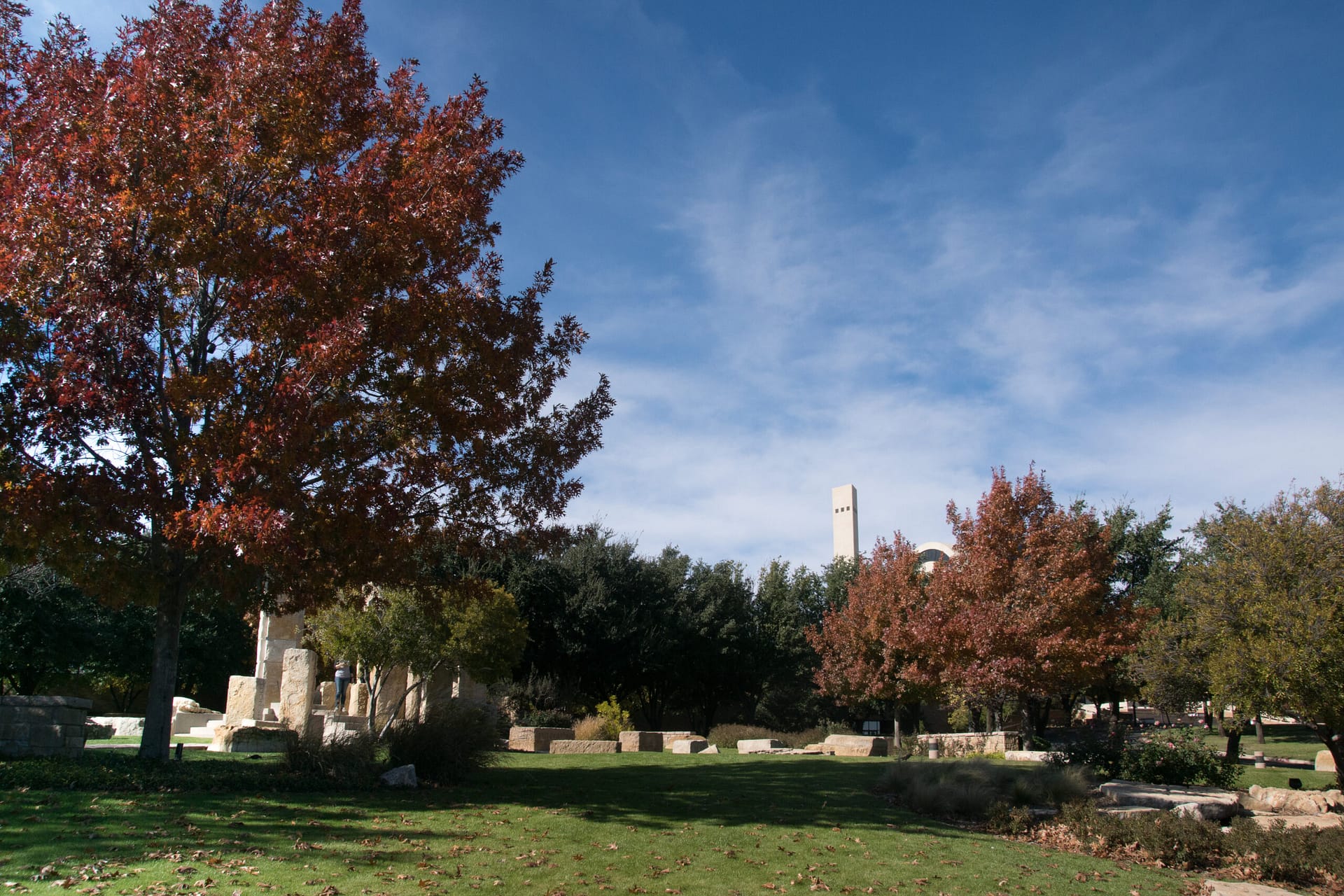The tree population at Abilene Christian University took a hit during February’s record freeze but it’s not down for the count. In fact, despite a week of the worst winter temperatures in nearly 40 years, only about 5% of the 2,600 trees on campus will have to be removed.
ACU employs three certified arborists: Corey Ruff, associate vice president for operations; Scott Warren, director of landscape and grounds; and Davy Crockett, campus arborist. Their collective tree expertise and care – including pruning and deep root feeding – on a day-to-day basis paid off when the winter crisis hit.
“Our loss has been light due to the tree species we picked and our tree care,” Warren said. “I think the losses will be barely noticed and will give us an opportunity to think through what we want the campus to look like in 25 years with the new varieties we plant.”
ACU’s trees are insured, in itself a form of tree care, and one that has literally paid off. With the insurance payment from the February freeze, the trees that can’t recover will be removed, a process that’s currently underway, and over the next year, the landscape team will start planting new ones.
“We have the flexibility to change locations, shift the tree population into some areas where we might need new ones,” Warren said. “We can use the insurance funds to plant in our areas of need.”
The team can also assess species and plant the best types of trees and increase variety. ACU’s campus currently includes 32 varieties, with the most populous being live oak, pecan, crepe myrtle, Afghan pine and cedar elms.
Warren said the worst hit area was Smith-Adams Hall, a few blocks away from the main section of campus. The hall’s Arizona ash trees were one of the species hardest hit in Abilene, and 11 will have to be removed. Most other trees that will be removed are well spread out across campus, and their loss will be less noticeable.
“I’m very proud of our tree canopy on campus,” Warren said. “Trees add a lot to university life. Our landscape is a huge part of college life, whether students are resting in hammocks or we are spending a few minutes among our urban forest to lower stress levels.”
ACU’s current campus was built in 1929 on a portion of the famous Hashknife Ranch. Most of the oldest trees were planted by the late campus caretaker J.S. “Sheriff” Burgess, who employed a team of student employees to blast planting holes in the hard ground with a half stick of dynamite. The tall pecan, live oak and sycamore trees shading the Hardin Administration building lawn were specifically planted with this unconventional method that has proved to be highly successful 90 years later.
— Wendy Kilmer
Aug. 4, 2021

